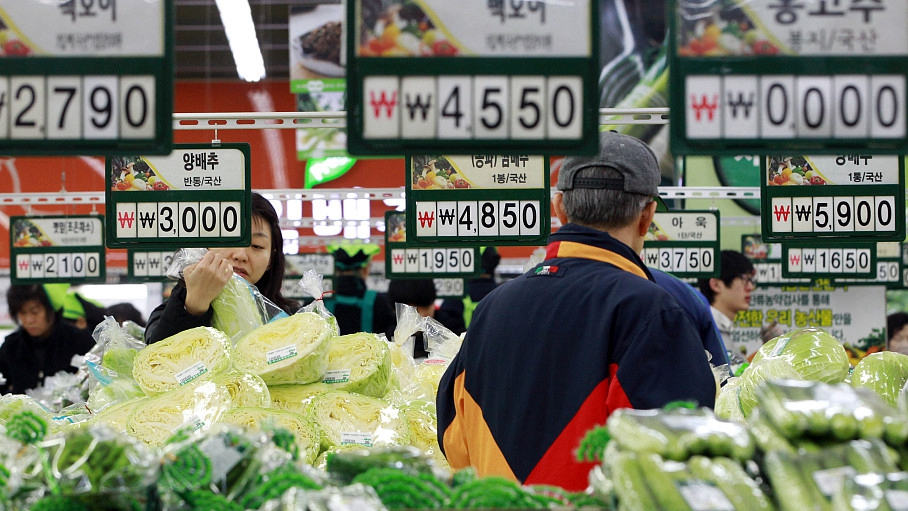
File photo: Agencies
SEOUL, Dec. 31 (Xinhua) -- South Korea's headline inflation stayed below 1 percent for two straight years owing to cheaper crude oil and lower services price, statistical office data showed Thursday.
The consumer price index (CPI) stood at 105.42 in 2020, up 0.5 percent from the previous year, according to Statistics Korea. The index added 0.4 percent in 2019, after going up 1.0 percent in 2016, 1.9 percent in 2017 and 1.5 percent in 2018 respectively.
It marked the first time since data began to be compiled in 1965 that the consumer price inflation hovered below 1 percent for two years in a row.
The statistical office attributed the low inflation to the COVID-19 pandemic that lowered global crude oil price and domestic services price.
Services price added 0.3 percent this year as the social-distancing guidelines discouraged people from doing outside activities such as eating-out and leisure.
Private services price increased 1.2 percent in 2020 from a year earlier, marking the lowest in eight years since 2012.
Public services price declined 1.9 percent as the government expanded welfare policy, such as financial support for public education and fiscal assistance to those who were hit hard by the pandemic.
It was the biggest fall in public services price that retreated 0.5 percent in 2019.
Price for industrial products slipped 0.2 percent in 2020 from the previous year amid cheaper global crude oil. Price for oil products plummeted 7.3 percent.
Affected by the cheaper crude oil, price for electricity, tap water and natural gas retreated 1.4 percent this year.
Price for agricultural, livestock and fishery products advanced 6.7 percent in 2020, posting the fastest growth in nine years since 2011. Pork price picked up 10.7 percent, and napa cabbage price jumped 41.7 percent.
Jeonse price gained 0.3 percent in 2020 from the prior year, and monthly rent added 0.1 percent.
Jeonse is the country's unique contract between two households where a landlord grants a residence right for two years to a tenant, who in turn lends a certain amount of money, or deposit, to the landlord.
Core consumer price index, which excludes volatile agricultural and oil products, was up 0.7 percent in 2020 from a year ago. It was the lowest increase since 1999 when the index added 0.3 percent.
The OECD-method core price index, which excludes food and energy costs, increased 0.4 percent this year.
The fresh food index, which gauges price for fish, shellfish, fruit and vegetable, soared 9.0 percent this year, recording the highest growth since 2010.
The so-called livelihood items index, which measures price for daily necessities, climbed 0.4 percent in 2020.
In December, the CPI came in at 105.67, up 0.5 percent from a year earlier. The monthly headline inflation hovered below 1 percent for the third consecutive month.
Price for agricultural, livestock and fishery products soared 9.7 percent in December from a year earlier, but it was down from a 11.1 percent gain in November.
Oil products price tumbled 12.6 percent this month, but it was slower than a 14.8 percent decline in November.
Private services price increased 1.3 percent in December as the government tightened its five-tier social-distancing rules to the second-highest level earlier this month to contain the COVID-19 resurgence here.
The core consumer price index rose 0.9 percent in December from a year ago.


